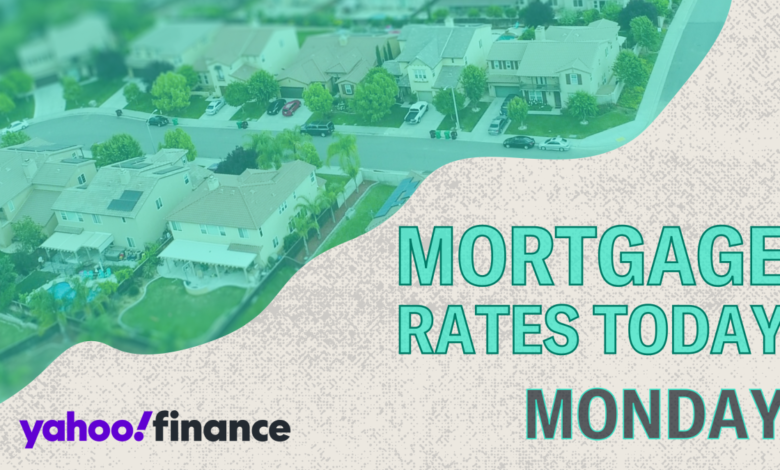Rates are much lower than 6 months ago

Fixed mortgage rates inched up again this week. According to Freddie Mac, the 30-year fixed rate rose by five basis points, and the 15-year fixed rate went up by three points. These are relatively small increases, but it can still feel frustrating when many people expected rates to be falling by this point in 2024.
The picture doesn’t seem so bad when you look at longer-term rates, though. Six months ago, the 30-year rate was 54 basis points higher than it is now. The 15-year rate was 56 basis points higher and over 7%. So even though rates are elevated this week, they are still lower now than if you had bought a home in early November.
When the Federal Reserve lowers the federal funds rate, mortgage rates will probably go down in response. However, according to the CME FedWatch Tool, there’s a roughly 92% chance the Fed will keep its rate the same at its June meeting. So we probably won’t see drastic changes anytime soon. If you’re ready to buy a house but holding out for rates to plummet first, it might not be worth the wait.
Learn more: What the Fed rate decision means for bank accounts, CDs, loans, and credit cards
Current mortgage rates
The national average 30-year mortgage fixed rate is 7.22%, according to Freddie Mac. This is an increase from last week, when the rate was 7.17%.
The average 15-year fixed mortgage rate has also gone up. The 15-year rate is 6.47%, an increase from last week’s 6.44%.
Read more: Is it a good time to buy a house?
30-year mortgage rates today
Today’s average 30-year mortgage rate is 7.22%. A 30-year term is the most popular type of mortgage because by spreading out your payments over 360 months, your monthly payment is relatively low.
If you had a $300,000 mortgage with a 30-year term and a 7.22% rate, your monthly payment toward the principal and interest would be $2,040.43, and you’d pay $434,554 in interest over the life of your loan — on top of that original $300,000.
15-year mortgage rates today
The average 15-year mortgage rate is 6.47% today. When deciding between a 15-year versus 30-year mortgage, there are several factors to consider.
A 15-year mortgage comes with a lower interest rate than a 30-year term. This is great in the long run because you’ll pay off your loan 15 years sooner, and that’s 15 fewer years for interest to compound.
However, because you’re squeezing the same debt payoff into half the time, your monthly payments will be higher.
If you get that same $300,000 mortgage but with a 15-year term and 6.47% rate, your monthly payment would jump up to $2,608.38 — but you’d only pay $169,508 in interest over the years.
Dig deeper: How much house can I afford?
Adjustable mortgage rates
With an adjustable-rate mortgage, your rate is locked in for a set period of time and then increases or decreases periodically. For example, with a 5/1 ARM, your rate stays the same for the first five years, then changes every year.
Adjustable rates usually start lower than fixed rates, but you run the risk that your rate goes up once the introductory rate-lock period is over. But an ARM could be a good fit if you plan to sell the home before your rate-lock period ends — that way, you pay a lower rate without worrying about it rising later.
How to get a low mortgage rate
Mortgage lenders typically give the lowest mortgage rates to people with higher down payments, excellent credit scores, and low debt-to-income ratios. So if you want a lower rate, try saving more, improving your credit score, or paying down some debt before you start shopping for homes.
Learn more: How to get the lowest mortgage rates
You can also buy down your interest rate permanently by paying for discount points at closing. A temporary interest rate buydown is also an option — for example, maybe you get a 7% rate with a 2-1 buydown. Your rate would start at 5% for year one, increase to 6% for year two, then settle in at 7% for the remainder of your term.
Just consider whether these buydowns are worth the extra money at closing — in April, the Consumer Financial Protection Bureau (CFPB) reported that the number of homebuyers paying for discount points drastically increased from 2021 to 2023, especially among people with lower credit scores. Ask yourself whether you’ll stay in the home long enough that the amount you save with a lower rate offsets the cost of buying down your rate before making your decision.
Source link





